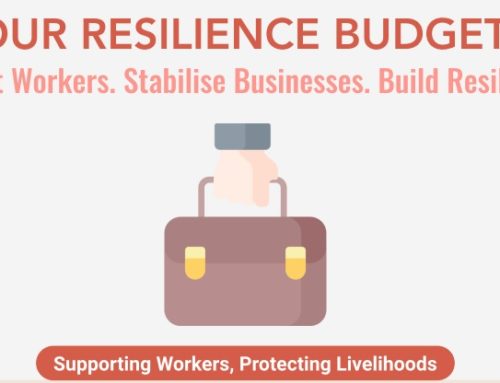A customer of AIA recently took to Facebook to express her unhappiness with how much her mother’s AIA insurance policy actual death payout was compared to what was projected in the contract. I’ve extracted the most important part of her rant that is relevant to most of us against AIA below:
One of the policies was an AIA Financial Guardian whole life (participating) policy she purchased when she was 64 in 1988. The sum assured is $30,000, and the projected death benefit at this point (30 years by 2017) is $67,140. We have paid $48,362 in total premium over 24 years where premium was payable. For this policy, AIA is paying a death benefit of $49,731! While I understand the $67,140 is a projection, this discrepancy is close to 25%. Are those projected numbers we are presented with when we purchase insurance policies nothing but a mere inflated dream so that insurance agents can close the deal and line their pockets? AIA seemed to benefit most if this was the case.
There have been many who just loved the opportunity to jump on the insurance company witch hunt claiming that this is another example that shows insurance is all a waste of money. Others tried to offer at least some unbiasness in voicing their opinions. From my professional perspective, apart from the pathetic customer service portrayed in the client’s complain, there has been no wrongdoing contractually or legally by AIA. Here are some important lessons that everyone should understand from this incident:
-
1) The contractual terms of this plan are as stated (unfortunately). With wholelife participating plans, there is always a guaranteed and non-guaranteed portion of payouts. The guaranteed component stated is what the insurance company is legally obliged to meet at the bare minimum. And in this case, the guaranteed benefits stated in the contract are indeed less than the premiums put in. It is possible that are the point of sale, the agent chose to emphasize or focus on the non-guaranteed component of the payout to entice the customer to purchase the plan.
2) The projected benefits and even cash value of any participating plan (plans that depend on investment returns to determine the non-guaranteed benefits) are simply that: PROJECTED. There is no guarantee that it will hit those numbers and depends largely on how well the company invests the money. In this case, the non-guaranteed component did not quite meet the original projections, which is why the total payout was less than what the family hoped to get.
3) In the past projection can be based on a unrealistically high returns of up to 8%. This might be one reason why the projected benefits are quite some distance apart from actual benefits. That is also why this was revised by the Life Insurance Association Singapore to enforce that projections be reduced to 3.25% and 4.75% so as not to give unrealistic expectations with consumers.
4) So does it make sense to purchase insurance plans where the guaranteed payout is less than the premiums paid? I would say no, unless there are other special features in the plan. The main reason for getting insurance is risk transfer and leverage. You should be paying a much smaller amount of what you may need in the event of certain catastrophes to transfer away this risk to the insurance company. It does not make sense to be paying the same or even more than your expected payout since it would be much wiser to keep the cash in the bank and to insure yourself with cash. However, currently, many new wholelife plans come with a multiplier, where payouts are multiplied 2x, 3x and up to 5x of the basic sum assured if the incident occurs before a certain age. In such cases, the expected payout is a lot more in the earlier years compared to the later years and thus this should be factored in when comparing against the total premiums paid.
5) Unfortunately, even if AIA did come back and explain why actual benefits is so far off from projections, I do not think it’s going to do any good now. The most they can say is that their investment returns didn’t quite make it and perhaps some details on how their participating funds fared. But what could have helped is if the family and the client knew beforehand that eventual benefits will be lower than expected, they could have made ample preparations for it. In the same manner, you need to be aware of what you can realistically expect from your policies so that you can make appropriate preparations for it like ensuring you have other sources to makeup for any shortfall.
6) A bonus statement should be issued to the family each year informing the client on the total accumulated bonus on her insurance contract. If you have a participating insurance plan, you should also be receiving annual notices on the amount of bonus declared each year on your plan. Once declared, these bonuses are locked in and becomes part of the guaranteed component. So do at least take a look at the numbers when you receive the letters in order to have some idea how much payout you can expect eventually.
7) As far as I understand this AIA plan, it allows policy owners to fund the premiums from the accumulated bonuses. That means policy owners can choose to stop paying premiums after a certain amount of time and let the bonuses pay for the premiums. If policy owner opted for that, then it means that the non guaranteed benefits will necessarily be reduced as it is spent financing the plan. This is one possible scenario, but without all the details, it’s just a conjecture. Again the lesson is to be well-aware of the features of the plan you purchased. Seek clarifications from your agent or financial advisor if you have doubts.
With all that being said, I personally am convicted that risk management through insurance is still a vital part of every person’s life. I just hope that agents and advisers explain the contract and the benefits clearly and without prejudice to their clients so that they know what they are actually getting. Everybody looses when such experiences surface and people who do not have the full facts start avoiding or worse yet, start terminating their insurance policies.
You can read the full story here.














Recent Comments